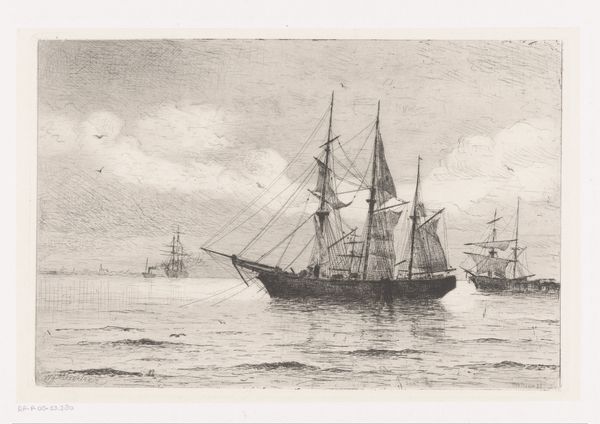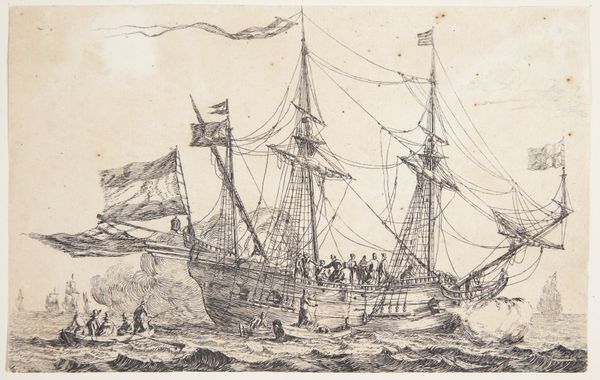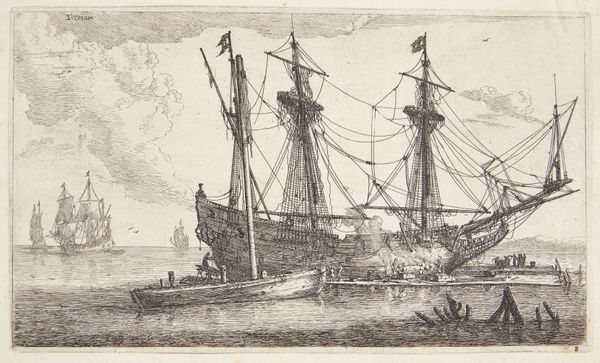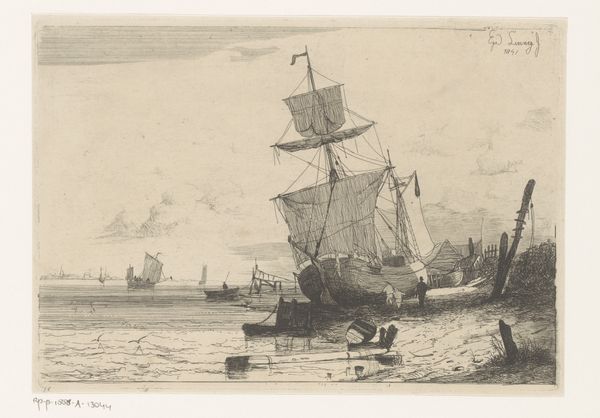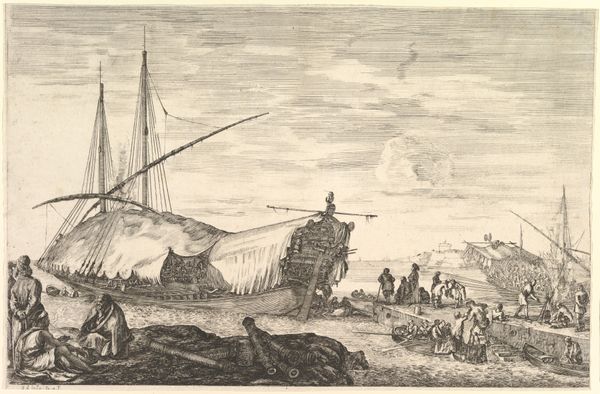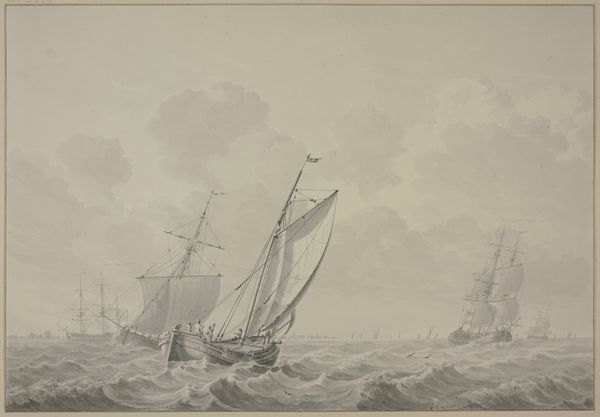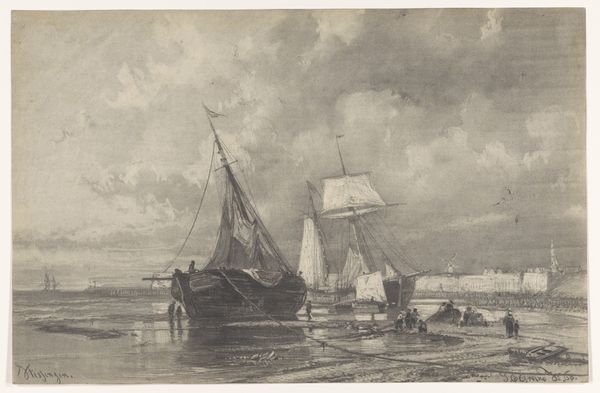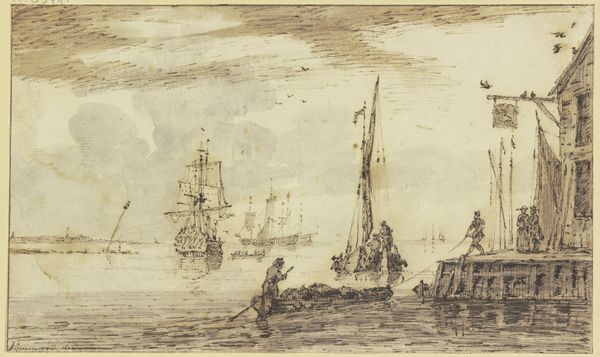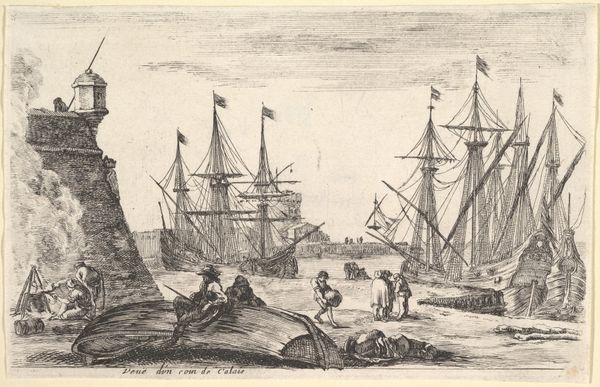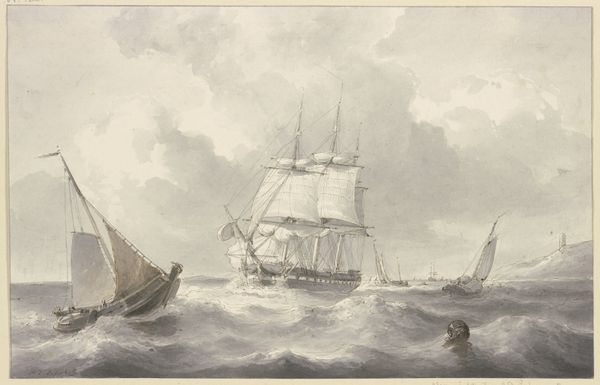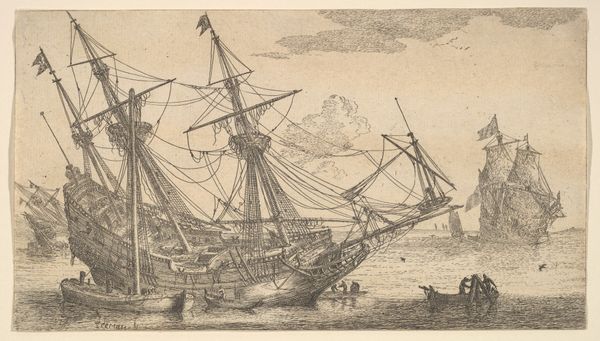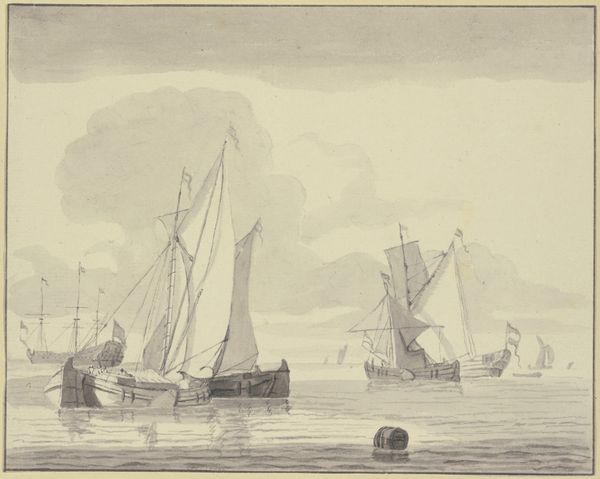
drawing, paper, ink
#
drawing
#
landscape
#
paper
#
ink
#
pencil drawing
#
watercolour illustration
#
genre-painting
Dimensions: 194 mm × 265 mm
Copyright: Public Domain
Curator: Let’s turn our attention to an undated ink and paper drawing currently entitled "Loading Boat in Port," residing here at the Art Institute of Chicago. Editor: It's rendered in almost monochrome browns and sepias, creating this really strong sense of looking into the past. The overall effect, at first glance, is one of tranquil labor; a harmonious interplay between nature and humanity’s effort to tame it. Curator: The scene depicts just that, the meeting place between commerce and community: people engaged in what appears to be a busy port. It's not simply about recording a moment, though. We can observe the historical and social context – the way labor is structured here hints at power dynamics. Who is loading and unloading? Who benefits from this activity? We must examine it within its historical economy. Editor: Absolutely. Ships, historically, represent far more than transportation, of course. This large sailing vessel, the focal point of the drawing, towers over the smaller boats and figures on the shore, immediately establishing it as a symbol of commerce, and likely, the culture attached to the places to which the large ship sailed. Look at how many other smaller sailboats appear on the water, each like a signifier in the artist’s message about movement of cargo, but maybe also a message about migration or discovery too. Curator: Indeed. And within this image we find a multitude of class and social issues coming into view as the local workers operate beneath the structure of what can be regarded as this behemoth. These smaller sailboats are connected, often invisibly, to global empires through the movement of people and goods. I’m curious about how you regard its timeless qualities and overall monochrome cast. Editor: I think that monochrome, that sepia tint, makes it accessible. It gives the whole artwork a dreamlike, or photographic, quality. As for timeless, one has to keep in mind that boats as transporters are nearly universal across cultures; their function has become part of our collective visual language of journey. Curator: So, it’s clear that we each view the work in complementary ways: for you, there's a thread of continuity, the drawing weaving itself into collective cultural memory and universal meaning-making. Editor: And for you, it opens itself to questions of power, race, class, and even gender—so the conversation extends far beyond the drawing itself. Curator: Exactly. Let’s move to our next work.
Comments
No comments
Be the first to comment and join the conversation on the ultimate creative platform.
